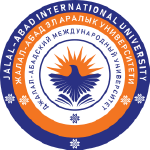Electrical Cardioversion for Atrial Flutter in a Patient with Severe Left Ventricular Systolic Dysfunction: A Case Report
DOI:
https://doi.org/10.63666/ejsmr.1694-9013.2.I.2025.34Keywords:
Atrial flutter, electrical cardioversion, heart failure, left ventricular dysfunction, implantable cardioverter-defibrillatorAbstract
Background: Patients with chronic heart failure (CHF) and severe left ventricular systolic dysfunction (LVEF <35%) are at elevated risk for life-threatening arrhythmias. Atrial flutter (AFL) can precipitate acute hemodynamic instability in this population, often requiring urgent intervention.
Case Description: A 61-year-old male with ischemic cardiomyopathy (LVEF 31-34%), an implantable cardioverter-defibrillator (ICD), and paroxysmal atrial fibrillation presented with CHF decompensation. He developed typical AFL with 2:1 atrioventricular (AV) conduction, prompting intensive care unit (ICU) transfer due to impending hemodynamic deterioration. Despite optimized guideline-directed medical therapy, synchronized electrical cardioversion with a 100 J biphasic shock successfully restored sinus rhythm without complications.
Conclusion: This case illustrates the safety and efficacy of low-energy electrical cardioversion for acute rhythm control in AFL among patients with advanced heart failure and severe systolic dysfunction. It underscores the value of vigilant monitoring, the limitations of ICD therapy for supraventricular arrhythmias, and the need for multidisciplinary, individualized management to avert decompensation in high-risk patients.
References
1. Van Gelder IC, Anselmino M, Boriani G, et al. 2024 ESC Guidelines for the management of atrial fibrillation (developed in collaboration with EACTS). Eur Heart J. 2024;45(36):3314-3414. doi:10.1093/eurheartj/ehae176
2. Wybraniec MT, et al. Clinical characteristics of atrial flutter and its response to pharmacological cardioversion with amiodarone in comparison to atrial fibrillation. J Clin Med. 2023;12(13):4262. doi:10.3390/jcm12134262
3. Elgaard AF, Dinesen PT, Riahi S, et al. External cardioversion of atrial fibrillation and flutter in patients with cardiac implantable electrical devices. Pacing Clin Electrophysiol. 2023;46(2):108-113. doi:10.1111/pace.14589
4. Joglar JA, Chung MK, Armbruster AL, et al. 2023 ACC/AHA/ACCP/HRS Guideline for the Diagnosis and Management of Atrial Fibrillation. Circulation. 2024;149(1):e1-e156. doi:10.1161/CIR.0000000000001193
5. Nattel S, et al. Mechanisms and management of atrial flutter. Can J Cardiol. 2021;37(9):1364-1373. doi:10.1016/j.cjca.2021.03.019
6. Heidenreich PA, Bozkurt B, Aguilar D, et al. 2022 AHA/ACC/HFSA Guideline for the Management of Heart Failure. Circulation. 2022;145(18):e895-e1032. doi:10.1161/CIR.0000000000001063
7. Mehra MR, et al. The 2016 International Society for Heart Lung Transplantation Listing Criteria for Heart Transplantation: A 10-Year Update. J Heart Lung Transplant. 2016;35(1):1-23. doi:10.1016/j.healun.2015.10.023
Downloads
Published
Issue
Section
License
Copyright (c) 2025 Eurasian Journal of Scientific and Multidisciplinary Research

This work is licensed under a Creative Commons Attribution-NonCommercial-NoDerivatives 4.0 International License.












